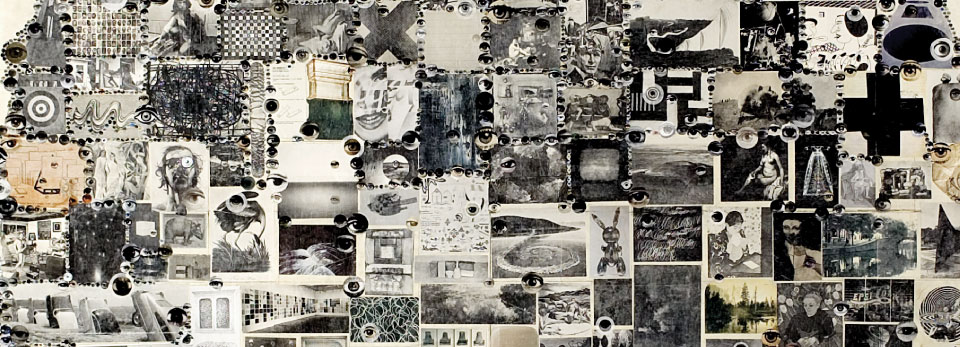

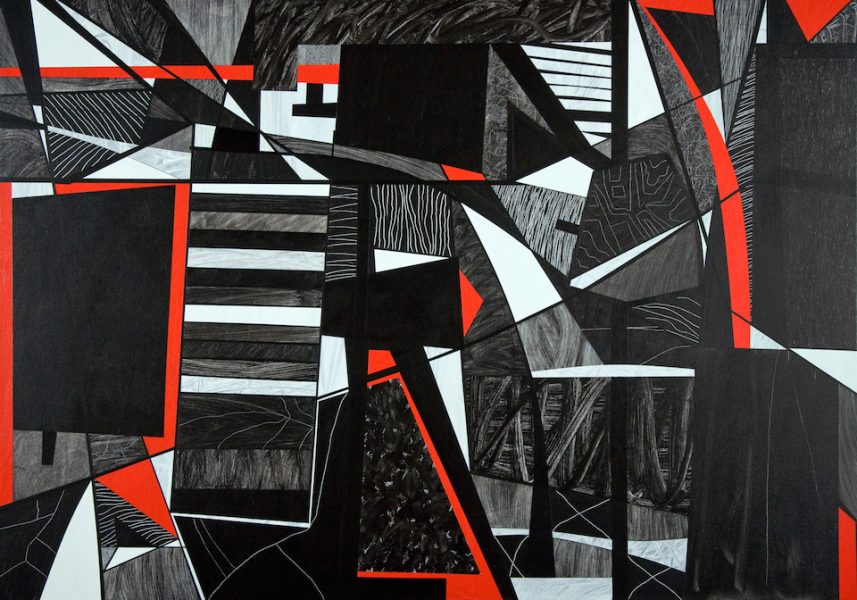
Tom Stanley draws with paint. His work is graphic and he uses a limited palette of black, white and red, which he calls “the most useful colors.”
He builds his own stretchers and often paints in the hallway outside his office/ studio at Winthrop University. Preferring to work on several pieces at once, Stanley paints one panel, takes it down, then moves onto another, and then another. This rotation allows him to be free from formulaic concerns.
READ THE FULL STORY [+]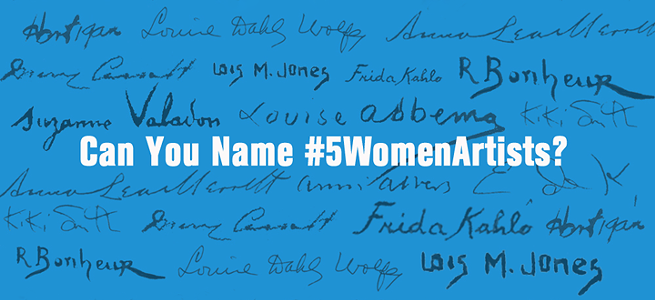
520 national and international cultural institutions from seven continents and 30 countries participated in the second year of the National Museum of Women in the Arts’ (NMWA) acclaimed #5WomenArtists social media campaign, which has just been awarded a 2017 American Alliance of Museums’ MUSE Award for outstanding achievement in media. NMWA, the world’s only major museum solely dedicated to celebrating women artists, champions women in the arts all year long, but in March, during Women’s History Month, the museum has an even greater opportunity to celebrate women artists.
READ THE FULL STORY [+]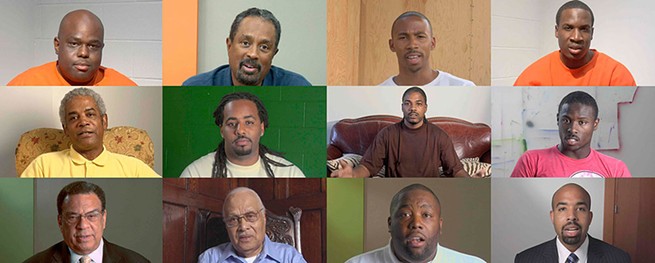
When he was a child back in the mid-1960s, photographer, performance artist, and filmmaker Chris Johnson lived in Brooklyn. That was pre-gentrification Brooklyn, meaning that Johnson, whose family was solidly middle-class, was surrounded by other African Americans who were both wealthy and poor, educated and uneducated.
“African Americans couldn’t buy property outside of a few exclusive neighborhoods like Harlem and Bed-Stuy in New York,” Johnson says. “So you had this rich mixture of different classes of African Americans living in close proximity. My family was middle-class, and I had doctors and lawyers living not too far away from me.”
READ THE FULL STORY [+]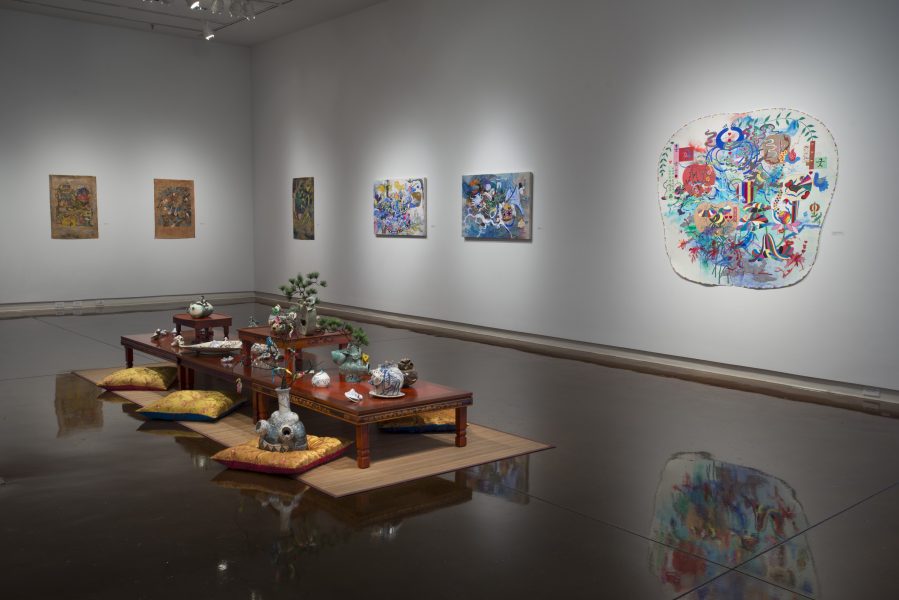
Charleston is having a moment. Again. Nearly 400 years after a group of enterprising colonists settled the jewel of the Lowcountry—a velveteen seaport that would come to be synonymous with Southern charm, skimmer boats, and the clip-clop of carriage tours—the Holy City continues to cast its spell on visitors far and wide.
READ THE FULL STORY [+]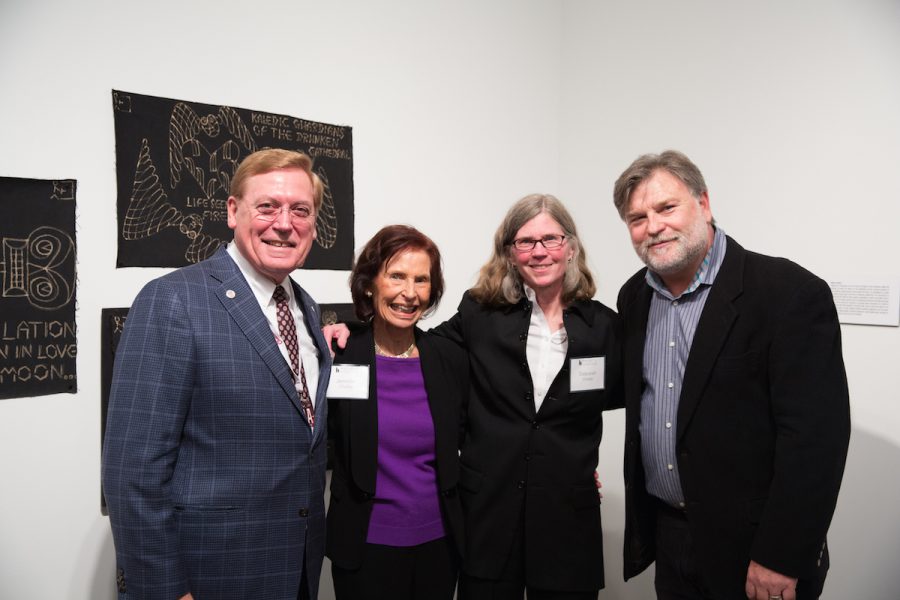
This fall, the College of Charleston received a $1 million endowment in support of The Halsey Institute of Contemporary Art, announced Mark Sloan, the Halsey’s director and chief curator. The donation is a gift from Deborah Chalsty, a member of the Halsey’s Advisory Board.
“We are deeply grateful for the generosity of Deborah Chalsty, a longtime friend and advocate of the Halsey, and a committed champion of the visual arts,” said Sloan.
“With the tremendous support of Deborah Chalsty, the Halsey can further its vital role as a creative force on our campus and in our community,” said President Glenn F. McConnell ’69.
READ THE FULL STORY [+]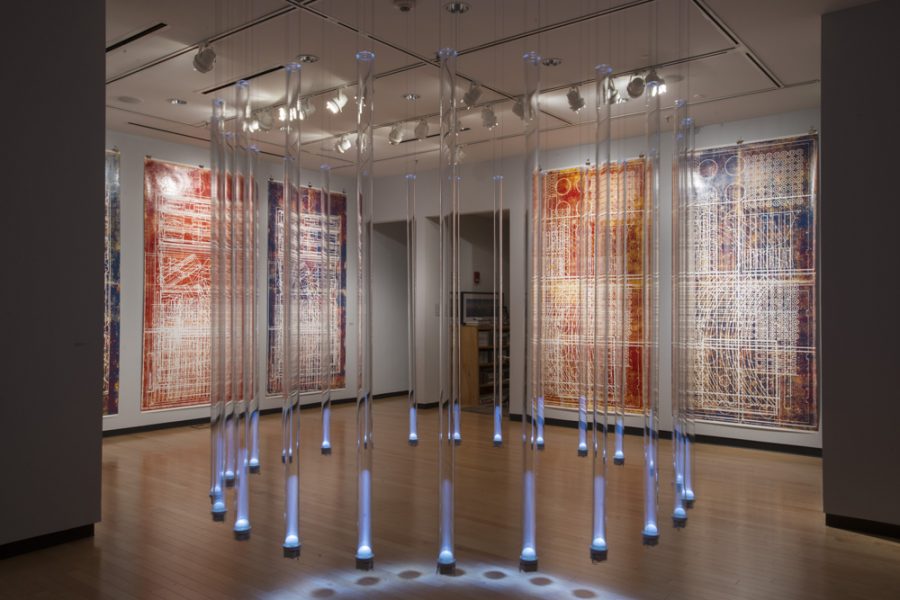
Until recently, Charleston was not a place associated with contemporary art. Mostly it was known for its charming galleries on Broad Street and in the French Quarter, its pastel images, endearing church-steepled cityscapes and light-filled views of marshes and creeks and oyster beds.
Other kinds of art could be found in town: still life paintings, some decorative abstract works, pictures made in the classical tradition, some portraits. The only place to go for a dose of contemporary art was the Halsey Institute at the College of Charleston, which has long featured work by lesser-known and marginalized living artists.
But that is changing.
The Halsey still is a fountainhead of new art, especially now that it’s comfortably ensconced in the Cato Center for the Arts, which opened in 2010. On its firmer footing, director Mark Sloan has been able to show off some extraordinary artists. Local artists have declared repeatedly that Charleston never could have cultivated a contemporary arts scene without the presence of the Halsey.
READ THE FULL STORY [+]
Pop into the Halsey Institute of Contemporary Art that serves as a multidisciplinary laboratory of sorts for visual artists.
READ THE FULL STORY [+]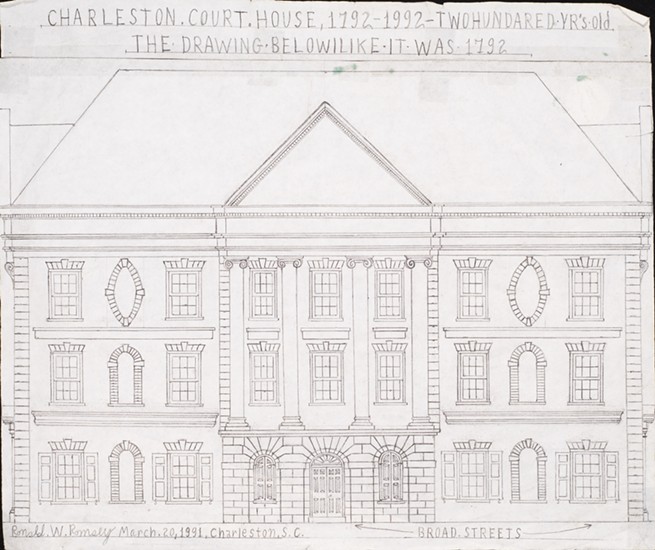
Charleston is often awarded titles such as the World’s No. 1 City or Most Beautiful City by Travel + Leisure Magazine. The world loves Charleston’s marriage of beautiful landscape and architecture with rich history. Historic preservation, the unsung hero of the Lowcountry’s fruitful tourism industry, works behind the curtains to maintain the city’s antebellum architectural integrity.
In order to spotlight and debate emerging issues in preservation, the Halsey Institute of Contemporary Art and the Historic Preservation and Community Planning program at the College of Charleston present an exciting panel discussion: “Unfolding Perspectives In Preservation,” in conjunction with The Halsey’s current exhibition, Ahead of the Wrecking Ball: Ronald Ramsey and the Preservation of Charleston. The panelists include four architects and critics who will discuss unique aspects of preservation.
READ THE FULL STORY [+]
The Halsey Institute’s Director and Chief Curator Mark Sloan is quoted in this LA Times article on self-taught artist Leonard Knight’s Salvation Mountain.
People call it a mountain, but it’s just 150 feet across and five stories tall, jutting skyward like a candy-colored, Jesus-inspired hallucination brought to life on the subdued pastel palette of the desert. Created in a sustained fever dream by the self-taught artist Leonard Knight over nearly three decades, Salvation Mountain rose as a monument to individual fortitude and artistic inspiration, growing in significance and fame even after Knight died in 2014 at age 82.
READ THE FULL STORY [+]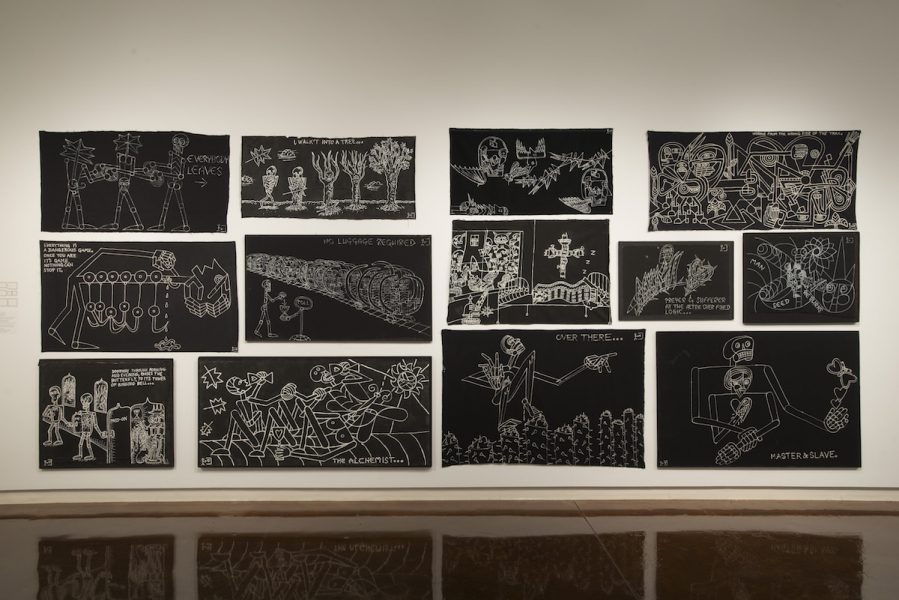
Bold red and black lines intricately tell stories of a reality that many are unaware even exist. Imperfect lines form a Charleston house, often unnoticed by passerbys. Such lines made up the drawings in the Halsey Institute of Contemporary Art’s latest exhibits. “Exit/Alive” by Anthony Dominguez and “Ahead of the Wrecking Ball” by Ronald Ramsey debuted on Jan. 20.
READ THE FULL STORY [+]